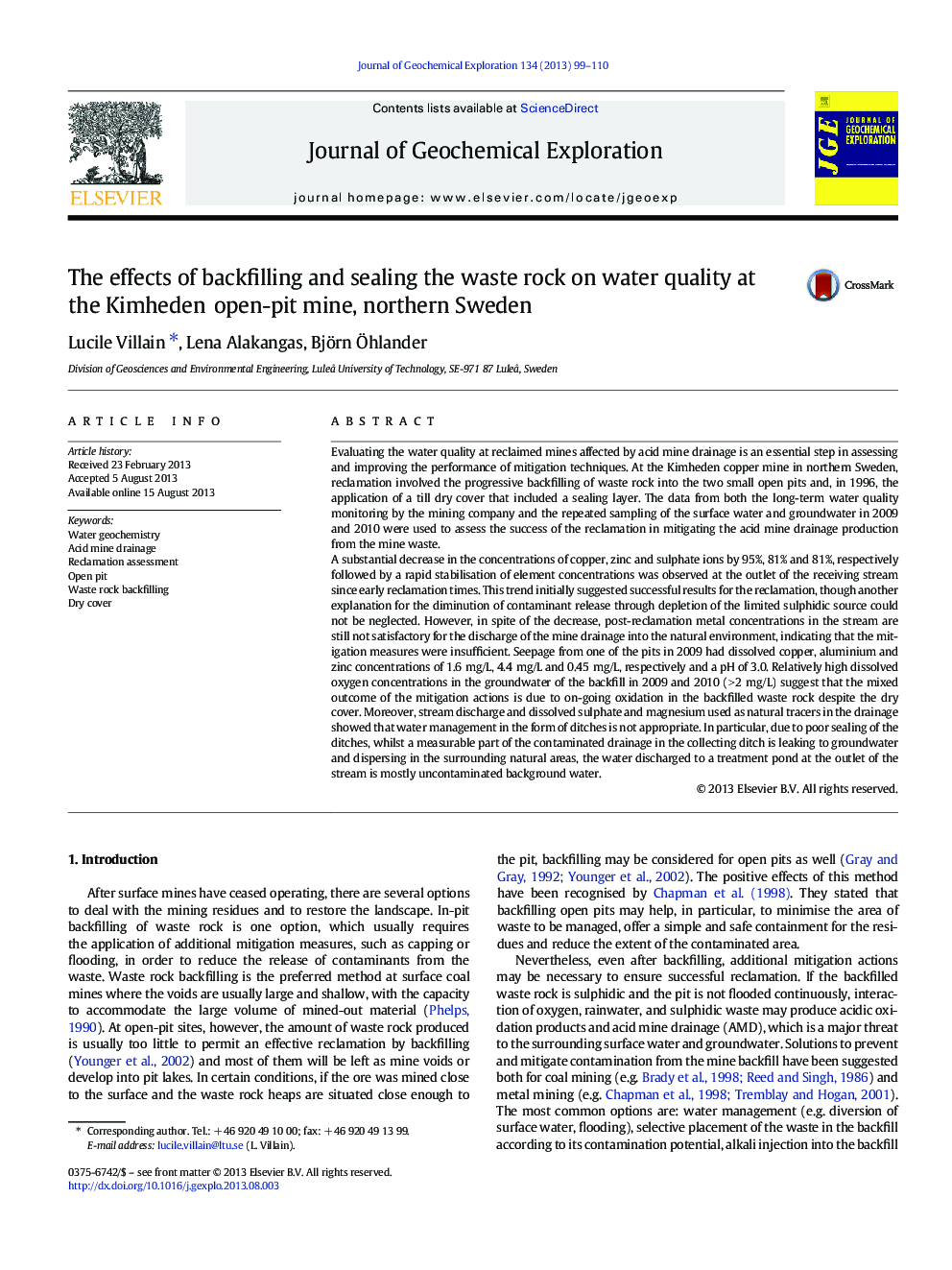| Article ID | Journal | Published Year | Pages | File Type |
|---|---|---|---|---|
| 4457520 | Journal of Geochemical Exploration | 2013 | 12 Pages |
•We studied the geochemistry of the drainage at a reclaimed open-pit copper mine.•The sulphidic waste rock had been backfilled and sealed in the two small pits.•The release of acid mine drainage (AMD) decreased since early reclamation times.•Results indicate, however, that AMD is still produced from the backfill.•We showed that reclamation is insufficient and water management is not appropriate.
Evaluating the water quality at reclaimed mines affected by acid mine drainage is an essential step in assessing and improving the performance of mitigation techniques. At the Kimheden copper mine in northern Sweden, reclamation involved the progressive backfilling of waste rock into the two small open pits and, in 1996, the application of a till dry cover that included a sealing layer. The data from both the long-term water quality monitoring by the mining company and the repeated sampling of the surface water and groundwater in 2009 and 2010 were used to assess the success of the reclamation in mitigating the acid mine drainage production from the mine waste.A substantial decrease in the concentrations of copper, zinc and sulphate ions by 95%, 81% and 81%, respectively followed by a rapid stabilisation of element concentrations was observed at the outlet of the receiving stream since early reclamation times. This trend initially suggested successful results for the reclamation, though another explanation for the diminution of contaminant release through depletion of the limited sulphidic source could not be neglected. However, in spite of the decrease, post-reclamation metal concentrations in the stream are still not satisfactory for the discharge of the mine drainage into the natural environment, indicating that the mitigation measures were insufficient. Seepage from one of the pits in 2009 had dissolved copper, aluminium and zinc concentrations of 1.6 mg/L, 4.4 mg/L and 0.45 mg/L, respectively and a pH of 3.0. Relatively high dissolved oxygen concentrations in the groundwater of the backfill in 2009 and 2010 (> 2 mg/L) suggest that the mixed outcome of the mitigation actions is due to on-going oxidation in the backfilled waste rock despite the dry cover. Moreover, stream discharge and dissolved sulphate and magnesium used as natural tracers in the drainage showed that water management in the form of ditches is not appropriate. In particular, due to poor sealing of the ditches, whilst a measurable part of the contaminated drainage in the collecting ditch is leaking to groundwater and dispersing in the surrounding natural areas, the water discharged to a treatment pond at the outlet of the stream is mostly uncontaminated background water.
